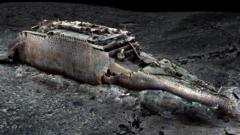Now that Suni Williams and Butch Wilmore are safe home on Earth, NASA and Boeing are turning to the original cause of their extended stay on the International Space Station.
They are figuring out what to do about the Boeing Starliner.
Williams and Wilmore originally flew to the International Space Station aboard a Starliner. NASA only intended for them to remain in the orbiting laboratory for eight days. But because of problems with the thrusters and helium leaks, the eight-day mission stretched into nine months before the astronauts could return home on board a SpaceX Crew Dragon. The Starliner they flew up on returned to Earth without them.
Starliner’s trip to the International Space Station was more fraught with danger than was hitherto revealed. At one point, it was questionable whether the vehicle could approach the space station or whether it would have to abort and return to Earth. It took some top-notch piloting by Wilmore to bring the spacecraft to the space station.
To quote the Duke of Wellington, NASA and Boeing have decided regarding Starliner that they are “in for a penny, in for a pound." They plan to study and fix the problems plaguing the rival spacecraft to the SpaceX Crew Dragon and bring it to operational status, no matter what.
According to Space.com, ground testing of the Starliner’s errant thrusters has revealed a reason why they went wrong in flight. “Repeated thruster firings can apparently warm up the doghouses so much that some of their Teflon seals bulge, affecting propellant flow.”
NASA and Boeing call the thruster pods “doghouses.” They are also looking at improved seals to deal with the helium leak problem.
Ars Technica reports that NASA and Boeing will spend most of 2025 subjecting the Starliner to extensive tests before certifying it to fly again. Whether the next Starliner flight will carry crew or just cargo is unclear. The flight is scheduled to take place late this year or early next.
The real problem facing the Boeing Starliner consists of what happens after it is certified for flight. It will have no more than five flight opportunities to take crews to and from the International Space Station before the it ends its service in 2030. By contrast, SpaceX has already flown 10 missions to the station.
That flight schedule is not enough to justify the spacecraft’s expense, setting aside NASA’s desire to have more than one way to transport astronauts to and from the orbiting laboratory.
NASA is partnering with a number of commercial companies to deploy private space stations to replace and even expand the functions that the space agency’s orbiting lab has performed for most of this century. These new facilities will need to be resupplied and have crews rotated on a regular basis.
Starliner could be used ...













